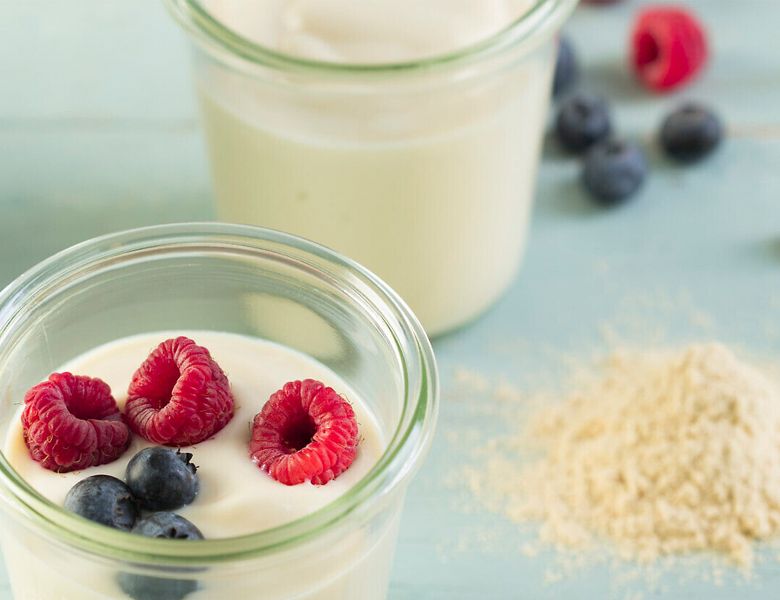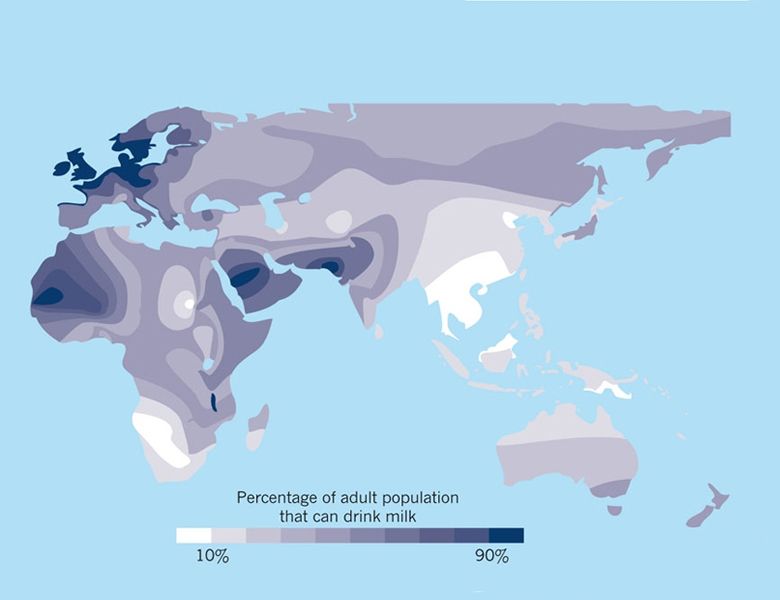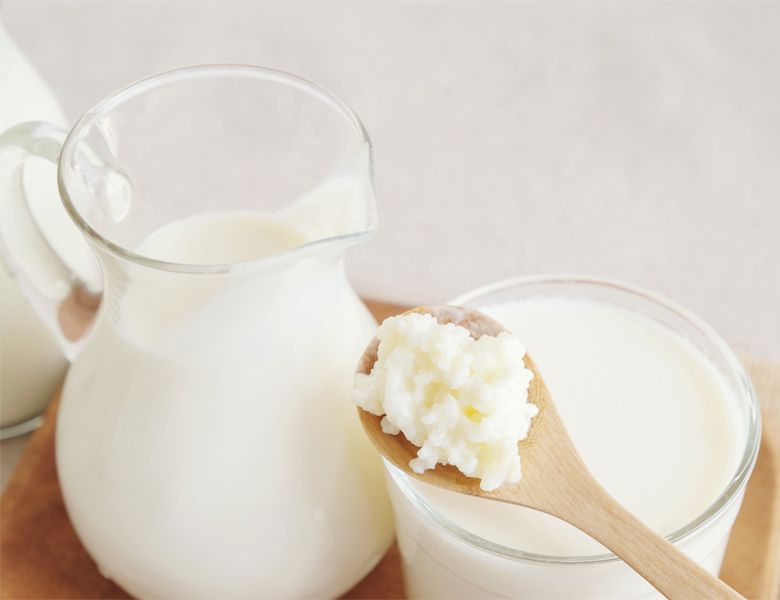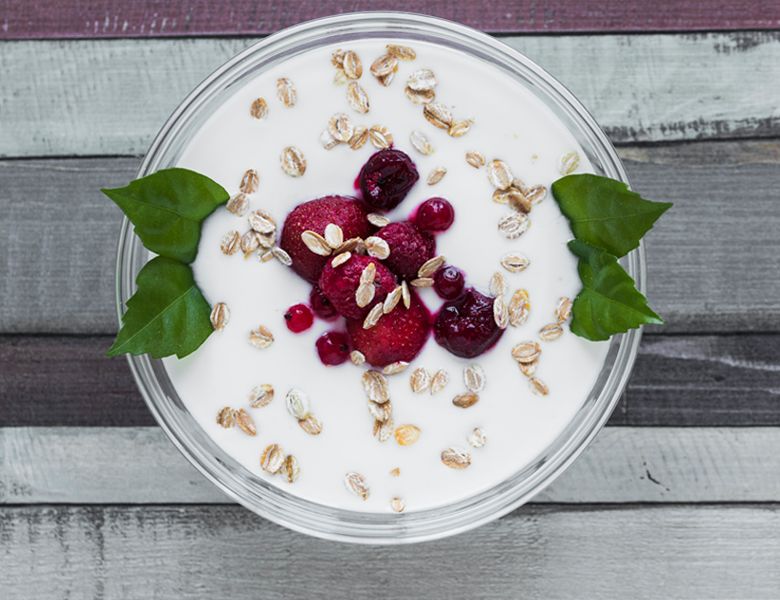High-protein dairy products

- | آتاماد |
- Viewer: 304
The increasing demand for nutritious foods has led to the development of high-protein food products. This demand is seen more among people who are looking to increase musc reduce appetite or prevent muscle atrophy, such as the elderly.
Protein is an essential macronutrient and is necessary for the formation of tissues and the regulation of various physiological functions of the body.
Milk proteins
Milk protein, which includes casein and whey proteins, is a valuable source of dairy protein that has nutritional and functional properties. With the advent of modern technologies, it is now possible to isolate and purify specific types of milk proteins with different concentrations that can be used in food systems. Some traditionally produced high-protein milk powders include acid casein, whey casein, caseinates, and precipitates. Subsequently, whey protein concentrate and whey protein isolate also become popular. Recently, milk protein concentrate, micellar casein concentrates powder (MCC), and colostrum powder has been introduced.
The use of membrane technologies, especially ultrafiltration, enabled the large-scale production of caseinates, concentrates, and whey protein isolates, which are currently used to increase the protein content of dairy products.
whey protein concentrate (WPC) and milk protein concentrate (MPC) are superior sources of high-quality protein.
Yogurt with high protein content
High-protein yogurts can be helpful in calorie-restricted diets because energy from protein appears to have a greater effect on satiety than from fat or carbohydrates. Besides, adding dairy proteins to yogurts causes changes in the product structure. and improve it. Modifying the protein content also reduces the release of more flavor compounds that can affect the overall aroma balance of the product.
Protein enrichment in yogurts greatly increases the nutritional and functional properties of this product and prevents syneresis, which is an undesirable structural defect in yogurt. Yogurt protein content can be increased before fermentation by the addition of milk powder, evaporation, and membrane filtration, or after fermentation by straining mechanical separation, or membrane filtration. Yogurt concentration after fermentation produces a large volume of acidic whey, which is one of the main concerns of the dairy industry. By concentrating before fermentation, the production of acidic whey is prevented. These different processing techniques affect the composition, structure, rheology, and sensory properties of yogurt.
Traditionally, strained yogurt can be prepared using cloth bags. To drain the whey, put the yogurt in cloth bags and strain it to the desired amount of solid. Depending on the applied pressure, the drainage time can be 6-18 hours. Today, in industrial production, fabric bags are mostly replaced by nozzle or quark separators. The fermented milk is vigorously stirred and optionally passed through a strainer or metal strainer to break up large clots. Yogurt is concentrated at 35-40°C and cooled to 15°C, the cream is optionally added, and the product is packaged. Fat standardization can be done before fermentation if specially designed separators are used for whey straining.
According to the standard Codex definition of "concentrated fermented milk", "high protein yogurt" is recommended as yogurt which contains at least 5.6% protein and less than 15% fat.
Sensory defects such as granular texture, bitterness, too acidic taste, and separation of whey are also technological challenges related to the use of filtration membranes to produce this type of yogurt.
Ice cream with high protein content
In ice cream, protein also plays an important role in developing its structure by emulsifying, stirring, and water-holding capacity. In general, ice cream contains about 4% protein and this amount is optimal in terms of the sensory quality of the product. Another factor such as viscosity also affects the quality characteristics of ice cream. An increase in protein content may limit the movement of water and thus increase the viscosity of the mixtures, leading to higher consistency coefficient values. Increasing the whey protein concentration in the ice cream mixture reduces the surface tension at the oil/water interface and thus increases the viscosity of the mixture. By using whey protein concentrate in ice cream formulation, freezing point and consistency and ash, lactose and specific gravity have been significantly reduced.
Reference:
Jørgensen, C.E., Abrahamsen, R.K., Rukke, E.O., Hoffmann, T.K., Johansen, A.G. and Skeie, S.B., 2019. Processing of high-protein yoghurt–A review. International Dairy Journal, 88, pp.42-59.
GET IN TOUCH
Copyright © 2023 Atamad.com All right reserved
Website design and SEO services by Seohama team – Web hosting by Sarverhama
Copyright © 2023 Atamad.com All right reserved
Website design and SEO services by Seohama team – Web hosting by Sarverhama








